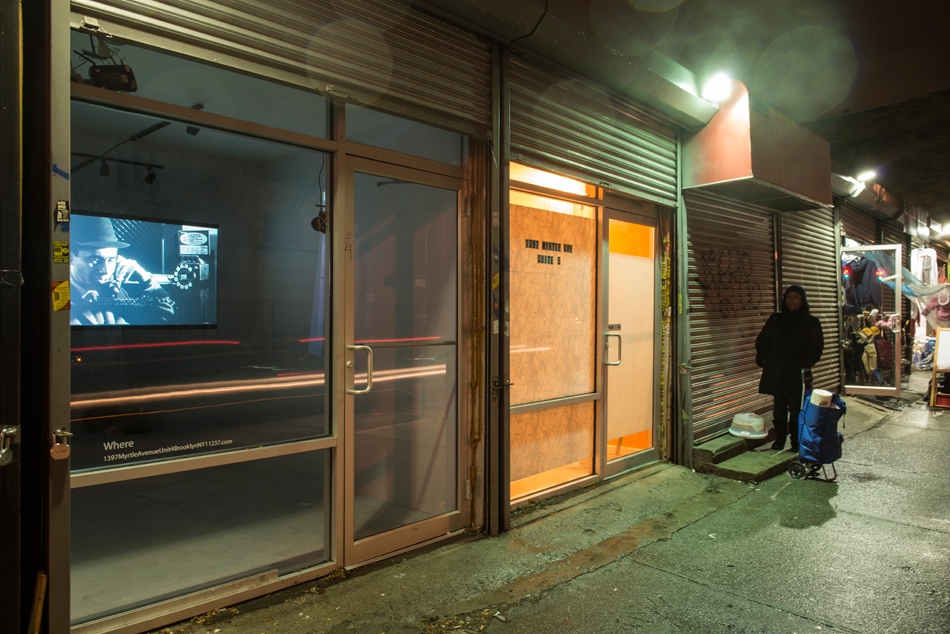In the nether regions of Bushwick, Brooklyn, located underneath an elevated subway track, there lies a strip of secure storage lockers. These lockers function, depending on the tenants, as bodegas, taco stands, cellphone stores or, if the tenant is Where, an experimental exhibition space run by first-year Yale PhD student Lucy Hunter and the artist R. Lyon. Currently presenting Where 2, a project that pays homage to Douglas Gordon’s 24 Hour Psycho (1993), Hunter and Lyon have yet to figure out what Where wants to be exactly: a critically lauded gallery in the hippest of hipster neighbourhoods? Definitely. A platform upon which overly educated participants can flex otherwise useless critical-theory muscles? Inadvertently. A gallery space that explores new modes of spectatorship by publishing a blog and video previews concurrently with exhibitions? Perhaps not as new as they’d like to think.
One thing is for certain, Where 2, which was curated by the young impresario A.E. Benenson, will stop most people in their tracks. The project consists of a flatscreen television that plays Alfred Hitchcock’s Psycho (1960); the light from the film fills the barren streets outside with an otherworldly flickering during the twilight hour, which is when it runs, 6.30 – 8.15pm daily. A press release taped to the locked glass entrance invites spectators to stream live footage of the screening – that is, themselves captured and broadcast by a webcam on site – on their smartphones via the gallery’s Tumblr page. This footage is relayed at a lethargic rate of only two frames per second, however, a speed prescribed by Gordon’s original video piece, which stretched Hitchcock’s film to 24 hours.
Both Gordon’s piece and its interpretation by Benenson force Psycho to produce new meaning within the context of the artworld
Both Gordon’s piece and its interpretation by Benenson force Psycho to produce new meaning within the context of the artworld. In Gordon’s case, this meaning has to do with questions of authorship and temporality: by slowing down the projection, Gordon tests his audience’s patience, but also liberates the film from the realm of both narrative and entertainment. In Benenson’s case, the question asked is whether or not authorship even matters. But what’s more interesting is the title Benenson gives himself. Even though he spent over 60 hours learning the coding necessary to create the feedback loop, Benenson calls himself a curator, not an artist, the latter being, of course, what Gordon was called for the exact same process of pirating an original and reformatting it. The strongest statement Where 2 makes, then, is that, within today’s artworld, being a curator, or at least calling oneself that, carries more weight than being an artist.
Where 3, the next exhibition slated for the space, will purportedly take this question to the next level by exploring what it would mean for a gallery to represent curators. Whether or not this is prescient of the future, or just another feedback loop for a group of young graduate students pondering their place within the artworld, remains to be seen. Suffice it to say that the curator is dead. Long live the curator.
This article was originally published in the March 2014 issue.
